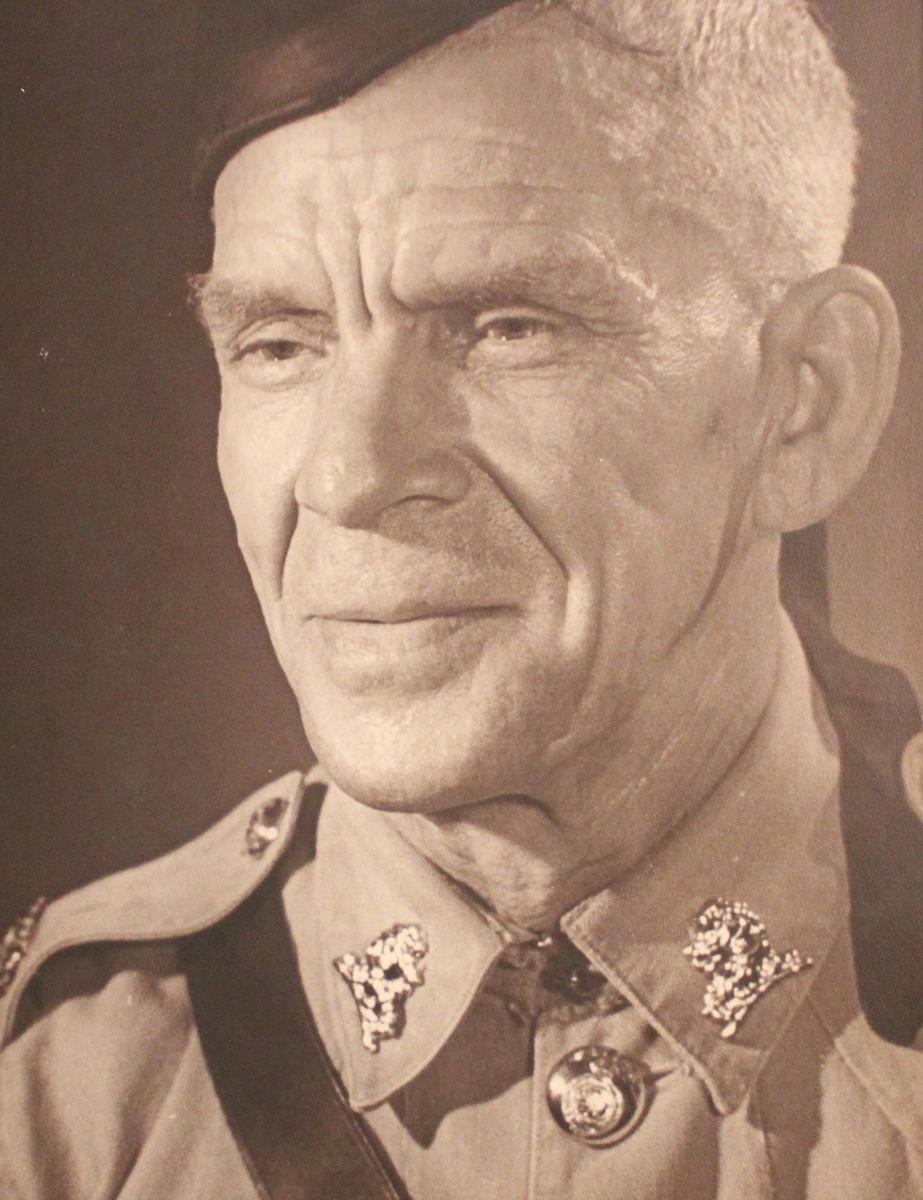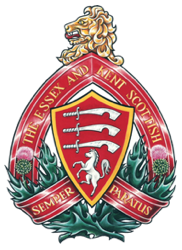Pipe Major ‘Jock’ Copland, MBE

Portrait of Pipe Major Jock Copland, MBE.
Warrant Officer 1st Class Pipe Major Jock Copland, MBE, EM was an influential figure in The Essex Scottish and The Essex and Kent Scottish. Copland was originally a piper in the Royal Engineers Territorial Force in Great Britain. In 1911, Copland moved to Galt, Ontario, where he became a founding member of the Highland Light Infantry pipe band. In 1916, Copland was invited by the 241st Canadian Scottish Borderers to form a pipe band. Later, Copland went overseas with this unit during World War I (1914-1918).
Copland and his pipe band had an undeniable impact on the Regiment and a vast influence on the Scottish identity within the Regiment. There were other active Highland Battalions raised for the Canadian Expeditionary Force and new The Commanding Officer, Captain Walter Leishmen McGregor Sr., believed Essex County needed one as well. In 1916, local leaders met with the Minister of Militia, Sir Sam Hughes and he accepted the request. However, he noted that the kilts would not be covered by the government.
The local leaders believed the kilt would convince men to enlist within the unit. Enlistments had slowed down and the ceremonial appeal of the kilts were popular within the community. Additionally, Windsor and Walkerville donated $10,000 and $3,000 in subsidies to purchase the new kilts for the 241st Battalion. The creation of a new pipe band, in combination with the Highland dress, gave the unit a new public image in which Copland played a significant part.
After the First World War, the pipe band stayed together as the “Border Cities Pipe Band” and formed a majority of the Essex Scottish Regiment pipe band when the regiment changed from the Essex Fusiliers to the Essex Scottish in 1927.
Copland was very active in the Windsor community. In the interwar period, he trained young pipers at the Walkerville High School Army Cadet Pipe Band. Once World War Two (1939-1945) started in Europe, many of his piper students followed him overseas.
When World War II broke out, Copland was 60 years old. At this age, he was fifteen years older than the standard age limit to enlist with the Canadian Armed Forces. Copland believed it was still his duty to serve his country, as he was an active military member for over twenty years. Copland lied about his age and enlisted as a 45-year-old man. While travelling overseas, he was accompanied by his two sons, James and Robert.
While in Britain, Copland fell ill and was sent back to Windsor in January 1941. This loss did not deteriorate the dedication Copland had for the Essex Scottish. It was quoted that Copland “maintained his tie with the Essex Scottish Regiment through the 2nd Battalion and was associated with the post-war unit until his final retirement in 1958.”
WO1. Pipe Major Jock Copland, MBE, was a widely celebrated man throughout the Regiment. For his long-term service, Copland was awarded as a Member of the British Empire (MBE). In 1958, Copland retired from his service with The Essex and Kent Scottish. A parade was held for Copland on 7 March 1958, where he performed the Regimental marches for the last time. Copland served in the Essex Scottish/Essex and Kent Scottish from 1927 until 1958.
Copland’s son, Pipe Sergeant James Copland, succeeded him as the new Pipe Major. The Windsor Scottish commented that “the success that the Regiment’s pipe band had enjoyed under Jock’s leadership would continue under his son.”
WO1. Pipe Major Jock Copland, MBE, passed away on 29 April 1966 at the age of 86 after suffering from a prolonged illness. Copland’s legacy with the Regiment continues to be honoured in Windsor, Ontario to this day. Moreover, in Dieppe Gardens, Windsor, the Warrant Officers and Chief Petty Officers Association of Essex County installed a bronze plaque in honour of Copland’s service with the Essex Scottish Regiment.
Both of Copland’s sons retired from the Regimental Pipe Band in the year following his passing, 1967. This ended one of the longest running family lines in the regiment. The Copland family members had spent a combined half-century with the regiment.
Story by Taylor Blackmere, Canada Summer Jobs 2022 participant
with The Essex and Kent Scottish Regiment Association.
Sources
- Duty Nobly Done: The Official History of The Essex and Kent Scottish Regiment by Sandy Antal, and Kevin R. Shackleton, 2006.
- People: The Essex-Scottish Regiment: Jock Copland by Maria Matuscak, Windsor's Scottish Heritage
- W.O.1. Pipe Major J. (Jock) Copland M.B.E. Monuments, The City of Windsor.

Photo taken in Aldershot Camp 22 August 1940 of Pipe Major Jock Copland (On the right) with his two sons, James (On the left) and Robert (In the middle).
